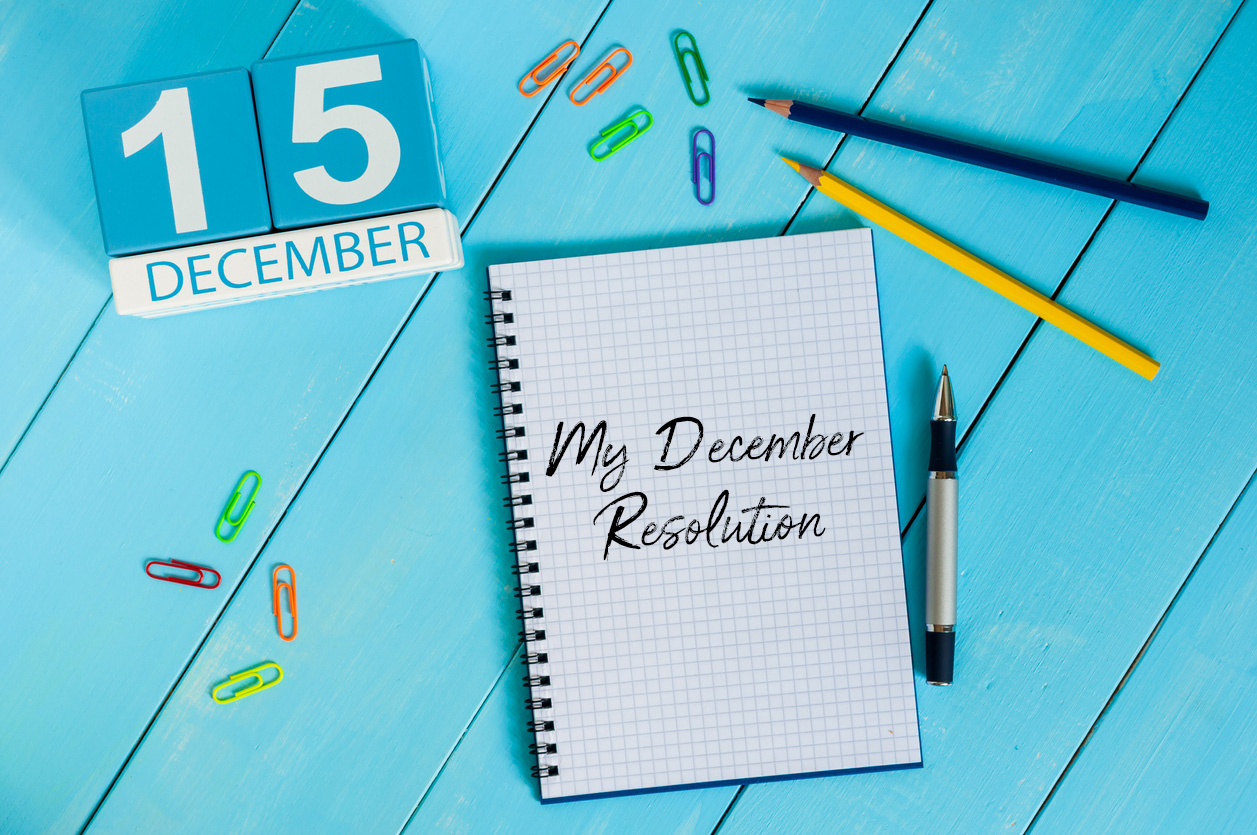The holiday season is a great time of the year to relax, recharge or catch up with things that have piled up on our “to do lists”. But the holidays also gives us the opportunity to develop a good habit or break a bad habit.
Every year, I teach two courses during the winter quarter; Molecular Pharmacology and Life101. In each course, I have about 250-300 students and with the budget cuts that the public universities have had nationwide, I don’t have sufficient Teacher Assistant support in these courses so I get super busy in winter. It almost feels like a full-time job was added to another full-time job. I have very limited time to exercise. In one of the lectures in Life101, I encourage my students to move and exercise. But, I have noticed that during the winter quarters, I struggle with being active and exercising myself. This is a bad winter habit and I need to break it.
So this year, I created a December Resolution.

I have decided to develop a good winter habit. I like to develop the habit of exercising every day during winter; my goal is to engage in a physical activity at least 30 minutes every day; this could be walking, biking, using a youtube video to do yoga, pilates, or a workout J I usually exercise a few times per week but I don’t exercise every day. Two weeks ago, I started exercising every day. Every night, before I go to bed, I check my schedule to see where I can fit 30 minutes of being active the following day. For the past two weeks, except for one day, I have been successful. It has not been easy because some days I just want to sleep in or I am too tired to exercise but I am doing my best to stick to the program.
What is your December Resolution? How about breaking a bad habit or developing a good habit during the holidays?
Here are a few helpful tips:
- Identify a good habit you want to develop or a bad habit you want to break.
- Examples of bad habits: staying up late, scrolling through social media on your phone for hours every day, eating too much sugar, drinking harmful drinks such as energy drinks, alcoholic beverages, high sugar fruit juices, sodas, watching too much YouTube, etc.
- Examples of good habits: exercising every day, being more organized, being more mindful, being a better listener, sleeping 7-8 hours per night, etc.
- Write down the good habit you want to develop or the bad habit you want to break on a small piece of colored paper and attach it to something you see often such as your phone, your laptop, your notebook, etc. You can also use an App that sends you reminders. One of my favorite apps is “Way of Life”. I use it to document progress too (see #4 below).
- Come up with a concrete plan. The plan needs to be simple and measurable. For instance, you can install an app on your phone to limit your social media scrolling to one hour per day only. Or you may choose to stop eating anything with artificial sugar or you may decide to exercise and be active every day.
- Then every night, document your progress before you go to bed. Giving yourself a check mark is very rewarding. Again, you can use an App for this. I use “Way of Life”.
- Some people need to have a reward system to stick to habits. If you are one of those people, then give yourself a “healthy” reward if you were successful. The reward could be as simple as eating a small piece of dark chocolate.
- Try to stick to your plan no matter what but if you were not successful one day, re-start the plan the next day. Don’t give up. Also, if you were not successful, still document your lack of success.
As you can see, these steps are generic and not proscriptive. Why? Because we are all very different when it comes to developing good habits and breaking bad habits. The key is to start and take the first step and to be persistent and consistent.




Leave A Comment